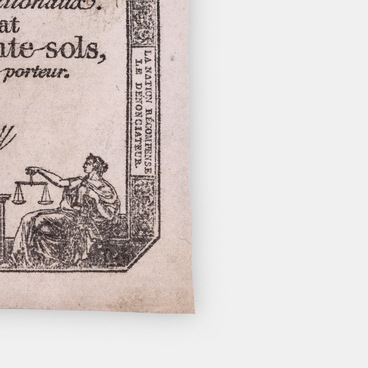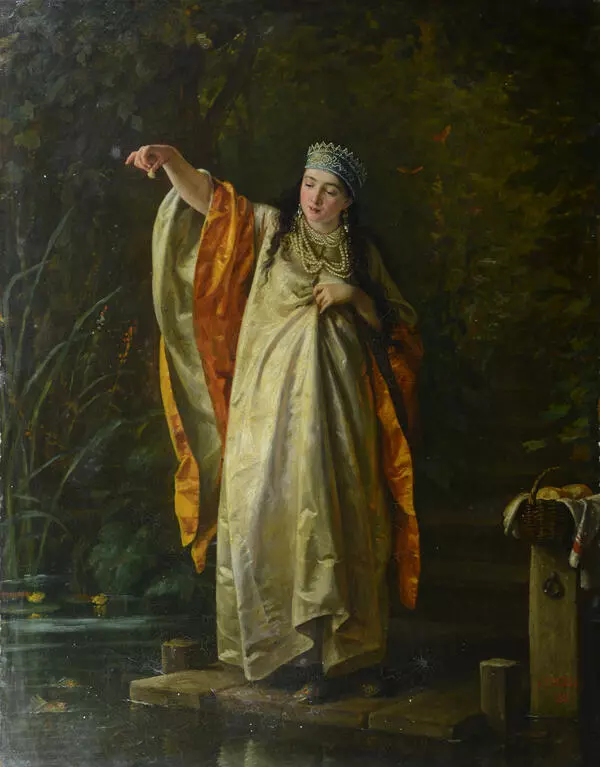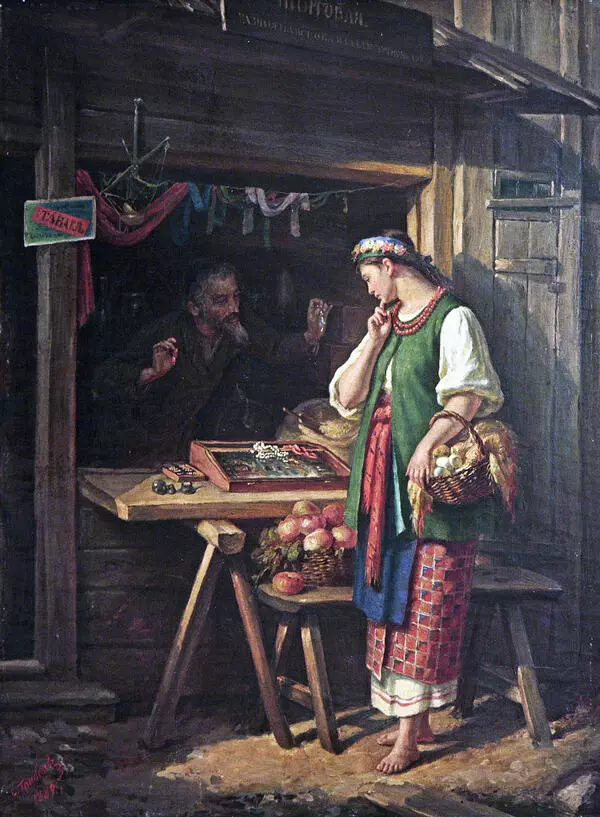The art collection of the Ivanovo Museum of Local History named after Dmitry Burylin presents the painting “Vladimir and Rogneda” by the historical painter Sergey Ivanovich Gribkov.
The canvas features the same historical plot as the artist’s other work — “Jealousy of Rogneda”. The subject matter of the painting is based on the events of the 10th century, described in the Laurentian Chronicle. The painting portrayed the Polotsk princess Rogneda Rogvolodovna, one of the wives of Grand Prince Vladimir. The events described presumably took place in 987, after Rogneda’s unsuccessful attempt to kill her own husband. The background shows Rogneda’s angry husband — Vladimir, Grand Prince of Kiev, ready to enter the bedchamber to execute Rogneda. It was the presence of his small, grief-stricken son Iziaslav that kept him from acting on his terrible intention. According to the extant chronicles, Vladimir took the advice from the boyars and banished Rogneda and her children to the town of Izyaslavl, which was built especially for her.
Gribkov’s talent as a painter manifested itself in this work not only through the masterfully painted draped canopy and the richly decorated background but also the choice of the location: Rogneda’s bedchamber. The painting is highly symbolic. For example, by depicting Rogneda in her wedding clothes, the artist emphasizes Vladimir’s intent to execute Rogneda. In Rus, there was a tradition established in pagan times: a woman wore her wedding clothes twice — at her wedding and at her funeral, so the wedding clothes were also used as a burial shroud. However, Rogneda was saved thanks to her son Iziaslav. In the painting, the mother holds her youngest son close; his head is lowered in sadness, and he barely holds back tears, knowing what fate awaits his mother. Yet the boy is ready to protect her — he has an unsheathed sword in his hands.
Grand Prince Vladimir went down in history as the “Red Sun” and the Baptizer of Russia. It is worth noting that the Laurentian Chronicle and the Moscow Grand Princely Svod of 1479 state that Iziaslav was Rogneda’s only son. Some historians, sharing Nikolay Ivanovich Kostomarov’s opinion, expressed their doubts about Yaroslav being Rogneda’s son. However, this contradicts the chronicles which repeatedly name Yaroslav as her son.







